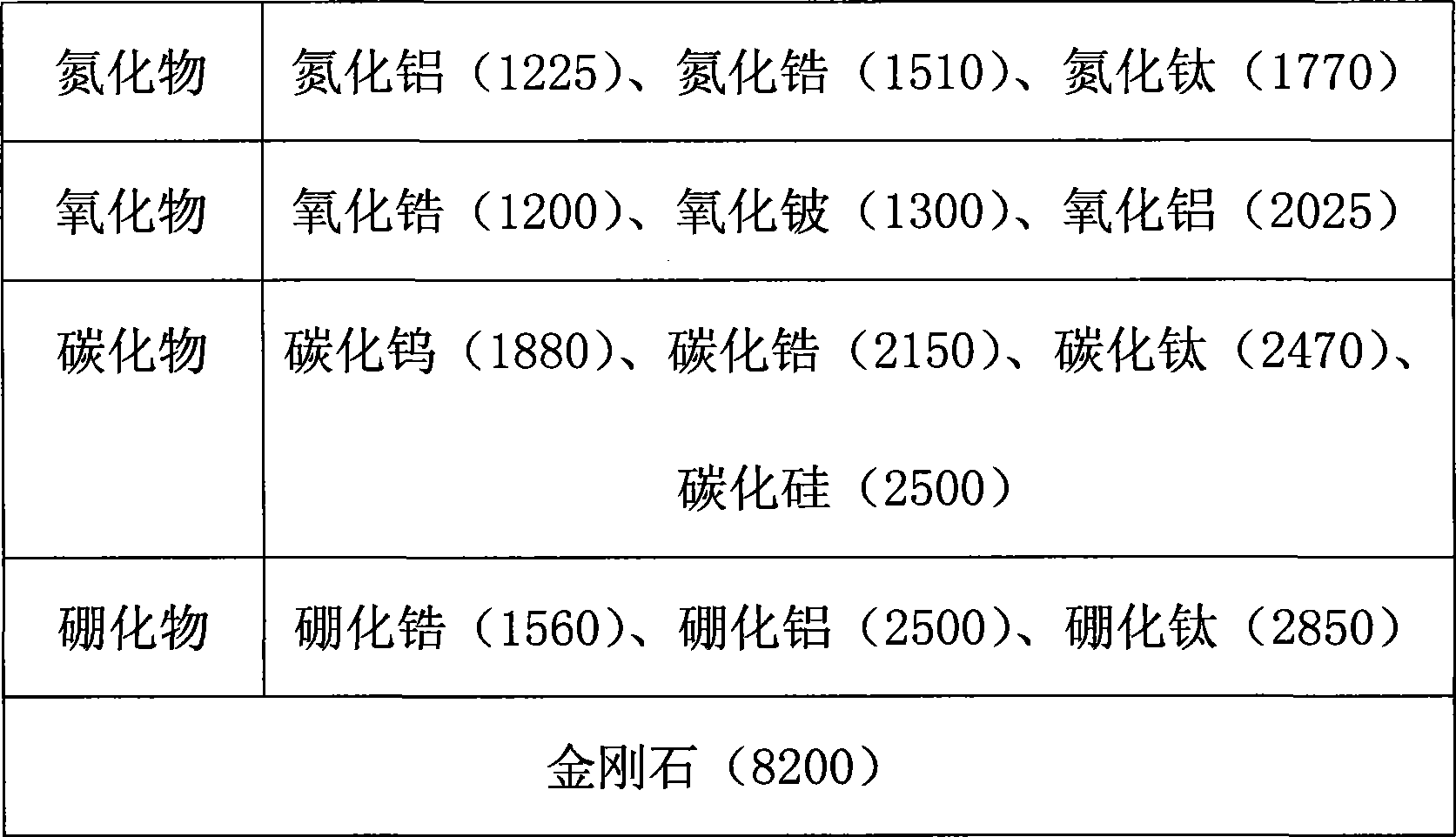Non-sticking lining with wearing resistance and anti-corrosive property and coating method thereof
A non-stick coating, anti-corrosion technology, applied in anti-corrosion coatings, coatings, layered products, etc., can solve the problem of the film of the base coating is no longer dense, and the anti-corrosion performance is reduced.
- Summary
- Abstract
- Description
- Claims
- Application Information
AI Technical Summary
Problems solved by technology
Method used
Image
Examples
Embodiment 1
[0080] Spray the anti-corrosion primer composition listed in Table 1 on the smooth aluminum substrate surface that has only been washed to remove grease, then dry at a temperature of 120±10°C (substrate temperature) for 10 minutes and then cool naturally to room temperature, then The wear-resistant midcoat composition listed in Table 2 was sprayed on the dry base coat, and the overcoat composition listed in Table 3 was sprayed wet-on-wet on the midcoat. After spraying, the formed three-layer composite structure coating was baked at a temperature of 380° C. for 8 minutes so that all the coatings were simultaneously fused on the substrate to form a non-stick coating with good adhesion.
[0081] The dry coating thickness (DFT) was determined by eddy current analysis, and the dry film thickness of the base coat / intermediate coat / overcoat was 13 microns / 23 microns / 10 microns, respectively. Since the thickness of the intermediate layer is 23 microns smaller than the diameter of the ...
Embodiment 2
[0124] The difference between this embodiment and Example 1 is that the anti-corrosion primer composition adopts the anti-corrosion primer composition listed in Table 4, and the film thickness of the primer / intermediate coat / overcoat is respectively 12.5 microns / 25 microns / 10 microns , all the other are identical with embodiment 1.
[0125] Table 4 - Primer Compositions (2)
[0126] Element weight percentage
[0127] PES 13.0
[0128] PTFE 20.0
[0129] NMP 8.2
[0130] Triethanolamine 2.5
[0131] Glycerol 3.7
[0132] Leveling agent 0.8
[0133] Deionized water 49.45
[0134] Carbon black pigment (1-2μm) 1.6
[0135] Surfactant 0.75
[0136] Total: 100.0
[0137] Solid content: 34.6%
[0138] Pigment to Resin Weight Ratio: 4.82%
Embodiment 3
[0140] The difference between this embodiment and Example 1 is that the anti-corrosion primer composition adopts the anti-corrosion primer composition listed in Table 5, and the film thickness of the primer / intermediate coat / overcoat is respectively 13.5 microns / 24 microns / 9 microns , all the other are identical with embodiment 1.
[0141] Table 5 - Primer Compositions (3)
[0142] Element weight percentage
[0143] PPS 12.0
[0144] PTFE 20.4
[0145] NMP 3.0
[0146] Leveling agent 0.3
[0147] Triethanolamine 0.78
[0148] Glycerol 0.91
[0149] Surfactant 0.72
[0150] water 59.2
[0151] Carbon black pigment (1-2μm) 1.6
[0152] Total: 100.0
[0153] Solid content: 34.0%
[0154] Pigment to Resin Weight Ratio: 4.94%
PUM
| Property | Measurement | Unit |
|---|---|---|
| Thickness | aaaaa | aaaaa |
| Diameter | aaaaa | aaaaa |
| Film thickness | aaaaa | aaaaa |
Abstract
Description
Claims
Application Information
 Login to View More
Login to View More - R&D
- Intellectual Property
- Life Sciences
- Materials
- Tech Scout
- Unparalleled Data Quality
- Higher Quality Content
- 60% Fewer Hallucinations
Browse by: Latest US Patents, China's latest patents, Technical Efficacy Thesaurus, Application Domain, Technology Topic, Popular Technical Reports.
© 2025 PatSnap. All rights reserved.Legal|Privacy policy|Modern Slavery Act Transparency Statement|Sitemap|About US| Contact US: help@patsnap.com

